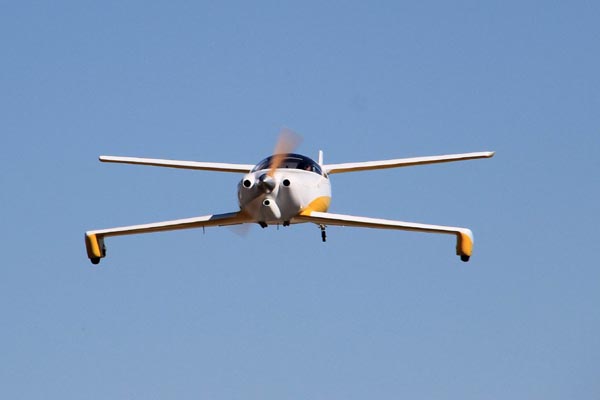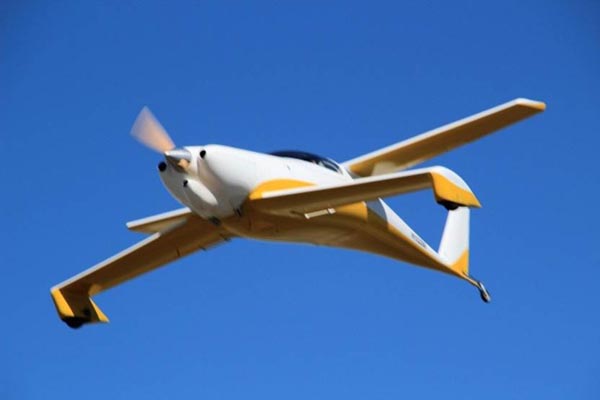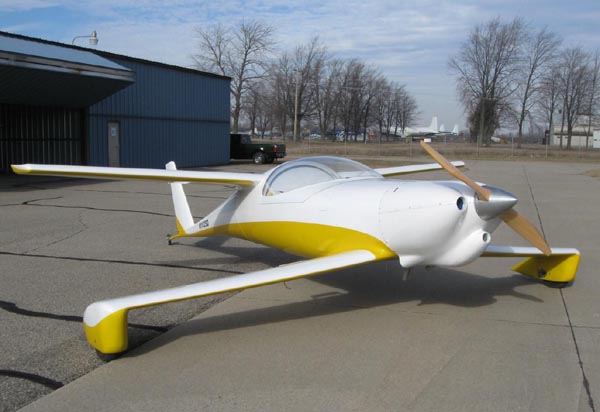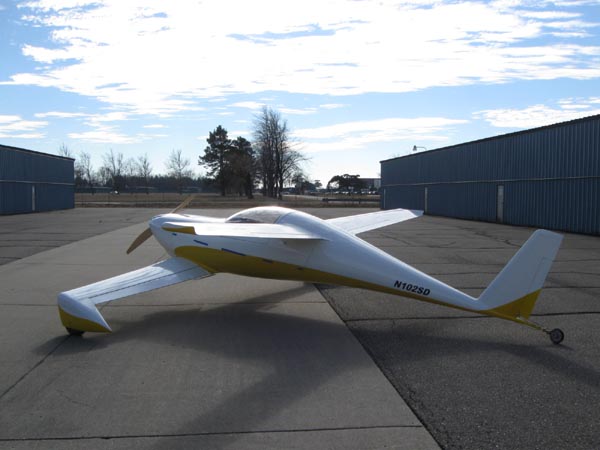The Phases of Experimental Flight
- Details
- Category: Safety
- Published: Tuesday, 26 June 2012 16:09
- Written by Sanjay Dhall
- Hits: 17989
by Sanjay Dhall
[Editor's Note: Sanjay Dhall made the following report on the Q-list and I am duplicating it here in the SAFETY section of the website so that everyone can see it. Sanjay has done an amazing job, not only building his plane, but also taking the time to do things right and document them along the way.
Overcoming those "first flight" jitters is something that we all will have to deal with. I appreciate Sanjay's candor and his willingness to NOT fly until he felt everything was ready. His professionalism serves as an example to the rest of us, and I hope each and every person who reads this takes a moment to reflect on this report before attempting to "take to the air" in their own creation. Congratulations on your latest phase of flight Sanjay! Great work!]

Hello Q-folks,
I thought I would update you on my progress with flight testing my Q200. You may recall I made my first flight a year ago on June 17, 2011. By a coincidence, I crossed the 40 hour formal testing period on June 18, 2012, and now have about 43 hours in the Q. In the early days of testing, each flight was a milestone for me and I had reported on my first many flights. As I continued to fly and test the plane, I felt that individual reports may not have added significant value, so I stopped sending those, barring an occasional summarized report in Q-talk. Now that I have arrived at the end of my formal testing period, I figured I would sum up my thoughts on the entire experience.
Phase 0
Before first flight - the overwhelming feeling was one of trepidation, terror and an incessant hurtling towards an inevitability that I had trouble facing - that I had gone to all the trouble and expense to complete this airplane, and now I had to do something - either fly it, find someone to fly it, or something else. Every time I considered the first flight, it would give me the creeps, and instead I would end up at the hangar making minor tweaks. I would continue to talk to many of you for advice and confirmation. I also consulted friends in the local EAA chapter, but their familiarity with this peculiar airplane was limited. At the end, the two design matters left, that concerned me most were CG location and ground angle of attack. So I checked weight and balance again, and checked ground angle. Decided that since the CG was currently at forward end of range, I should try to move it back somewhat to be a little closer to middle of CG range. Crawled into the tail with glass, flox, epoxy, bolts, and 11 lbs of lead plates. Also decided to change the tailwheel configuration to raise the tail to make the ground angle of attack shallower.
Then there were all these questions in my mind, some concerning the airplane, and others concerning me.
Will the engine keep running, will the tail stay on the ground on takeoff roll, will the prop clearance be sufficient if it does not, will the control hinges hold, would bouncing down the runway cause elevators to spring loose, were the control joints free enough.
Will I be able to keep it going straight, will I be able to keep my wits about me, will I be able to.

Phase 1
At first flight - it flies like an airplane. Wow, it took off without surprise, its climbing fast, plenty of power, now can I turn it. Wow it turns just when I think about it, just like a model airplane. Hey, I am well above pattern alt on downwind and climbing to my designated alt, I better pull back on the throttle a little. OK now for that simulated landing at a 1000' AGL. Now can I really land this.Now will it stay on the runway. Phew . relief!
Phase 2
First many flights - does the engine sound right???? Will it keep running? Circled the airport gazillions of times. What's causing the rattle? Learn its flight characteristics. How fast will it go, how slow, how steep a turn. Also learning to land this airplane has been an ongoing experience, still learning.
Phase 3
Leave the airport and fly 20 miles away. Climb to higher altitude when out from under Class B airspace. Tense times, watch temps, listen for engine sounds, rattles, shakes etc. Each sounds ominous. But the engine keeps running.
Phase 4
Increase distance envelope - Go to a different airport and land - increasing distances. Went to Pontiac airport 30 miles away, made a single bounce landing, Next trip went to Howell 35 miles away, landed successfully on a slightly smaller, narrower runway. Next trip flew to Adrian, 40 miles away, landed.
Phase 5
Winter - time to make changes to address numerous squawks including oil temp, rattle (Magbox mods), identify cause of transponder probs, radio probs.

Squawks
- Engine rattle - cause - mainly mag box contact. My mag box opening was a little smaller, more so with fiberfrax, etc.
- Engine rattle when turning left - mag box contact
- Engine carb too lean - not really, it appears to have been related to change of sound while leaning mixture, but still resulting from magbox contact. Opened carb, carb service, nothing wrong in the carb.
- Oil temp on higher side - hovering near 225f (sometimes higher, as high as 240f) at 80f outside temp - re-shaped fuselage belly under canard root near firewall to create higher opening to expose more of oil sump, trimmed and reshaped exit end of cowl to channel more air over oil sump, cut wider front round intake openings from 3.75" dia to 4.75" dia (~40% increase in intake area), reglassed, installed larger oil filter (more cooling surface area), added blast tube from plenum directed at oil filter. Combined effect from all these changes is a 15-25f oil temp drop. Now 90f outside temp yields 220f oil temp with some climb.
- Hot in cabin - added ducting from NACA vent on left side, and install vent to direct air on instrument panel. Added second vent in back of cabin, under wing. Still gets hot at 80f and sunny. This NACA vent has an adjustable damper, but total opening is just 1-1.25 sq. in. So I still need a bigger NACA, Also need to create a bigger opening to allow cabin air to get to vents aft of seat bulkhead.
- Gas smell in cabin. - Used a tissue paper rubbed at tubing joints to see if there are traces of blue stain on tissue. Improved, but not completely gone. I think I still get a faint smell.
- Elevator torque tube attach bolt holes become loose. Bigger bolt and shim stock installed, but the holes in Aluminum seemed to have grown again from use. This single bolt to elevator torque needs some redesign.
- Resonating buzz at high speed - coming from Plenum attachment - solved by tightening plenum to case attachment, and moving small aluminum inter-cylinder baffle piece.
- Shaved and ground away larger clearance of magbox to engine rear. Added reinforcement from inside firewall, and re-glassed exposed ply.
- Oil drain down inside carb upon engine shutdown, and inside cowl from carb - longer engine runs have helped reduce drip, also varies based on prop position at shutdown. Lately the quantity is minimal.
- Communication issues - radio functioned intermittently - tracked it to interference caused by power supply/charger on tablet PC computer used for GPS. Removed the tablet PC and charger, and radio functions well. Installed Android 10" tablet with high brightness for GPS/moving maps, no need for power, due to long battery life. No interference.
- Transponder -ATC reported it intermittent, So removed and sent in for service, but found nothing wrong. Ran tests with transponder test instrument, shows plenty of output power. Must have been the same interference from the tablet PC power supply, now removed. ATC has not said anything about my transponder recently, they have not asked me to ident either, maybe they are just being nice.
- Magnetic compass off by 15degrees, when master switch on, because of placement of Ammeter on left side of instrument panel with high amp wires running across length of instrument panel and under the compass. Just noted on compass correction card. Will move ammeter to right side of instrument panel in future.
- Airspeed gage reads high by about 15mph at cruise speeds. Have made a note of that, with no correction made to instrument and rigging. Could be due to my static air holes located just behind seatback bulkhead under wings. May move it aft in future.
- Fuel tank burp when main tank full. The unvented fuel cap sometimes traps air pockets, which expand with temp. Caused on 2 occasions to spit fuel past the fuel cap. I presume, in that 'spit' moment, the cap is forced to vent due to air pressure. Left some permanent blue fuel stains on the paint at the fuel filler opening. Now if tank is full, I leave the fuel cap slightly open to allow venting, with rags near the filleropening, till flight time. The real reason for this problem is that the overflow tube when built to plans, is a little below the crown of the main tank. Since the overflow tube is also a vent for the main tank, it becomes obstructed as it has fuel in it when main tank is full. Will need to change this overflow tube location and move it higher in the future.
Back to the report:
Phase 6
Gingerly re-familiarize myself with airplane after minimal flying through winter.
Phase 7
Increase distances and flight duration. Began flying higher and further, going out 60-70miles, circling destination, returning without landing there, to achieve longer engine runtimes and flight durations, altitudes up to 6500-7000', flight times of 1.2-1.4 hours. But constantly watching engine params - Oil temp, cht, egt.
From time to time on these flights, I have had moments that ranged between relaxation and euphoria, where everything is going fine, not worrying about engine, sounds or gages and just enjoying the scenery all around. Occasionally, have gotten into a playful state, so as to yank the stick around, make steep turns, add full power and see how fast it will go. Fun.
Phase 8
Remembering that this is a testing exercise, did climb and descent tests at altitudes, as also testing for best glide speeds and best descent rates. In the last 5 hours, added weights in right seat in 50 lbs increments, using sand and gravel bags. In the most recent flights, had 190 lbs in right side, full fuel, 90f outside temp, noted differences in performance during takeoff, climbout, and stepped climbs (to keep oil temps in check) to 8500', and noting that there was still a 500-600fpm climb rate available at that altitude, ~1200lbs weight and hot conditions. With these conditions the descent and landings were a little more surprising, in that approaches were somewhat short, requiring adding power to make the runway, with somewhat heavier landings, and longer rollouts. Fuel consumption is as would be expected from an O-200 at cruise.
Although, I am more familiar with the Q now than before, I have plenty of reminders on just about every flight, during takeoff, landings and at other moments, that there is a lot more to be learned about flying this airplane, in all sorts of conditions. For example, other than at home base which has 7500'x150' runways, I have made landings only on 5000'x100' runways. As a next step in my learning, in the near future I want to make landings at airport with 3500'x75' runways. Also, I have tried to restrict my flying to weather conditions that are decent, with winds no higher than about 15-20knots and directions are favorable. Will have to graduate past that also. Oh, and at some point, try to do some cross-country flying as well, actually go places!
As I progressed through these early hours, I have grown to really love flying the Q. Every takeoff is exhilarating, every bank and turn is a rush, and every landing exciting. But just when I think I am getting the hang of it, there is a sloppy takeoff or a landing close to the edge waiting to remind me to pay attention, and not let my guard down.
This has been a most rewarding experience. I hope to keep at it. I hope you will too.
Thanks
Sanjay Dhall




